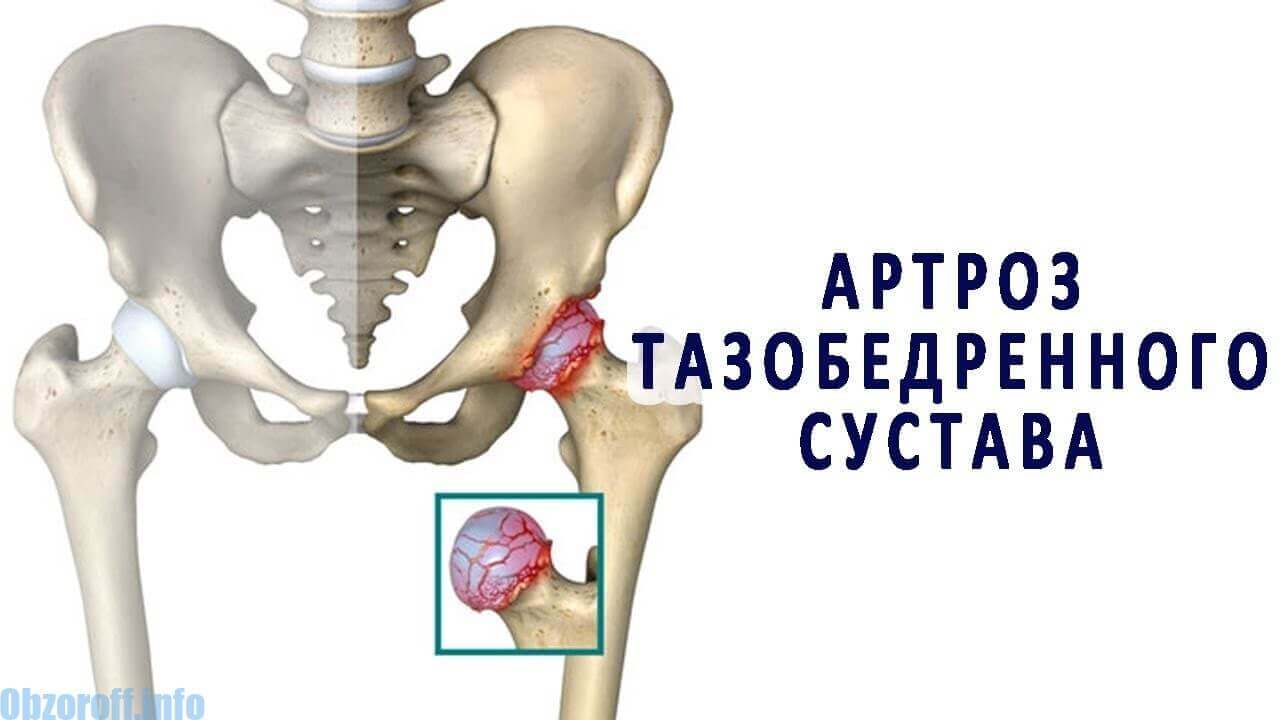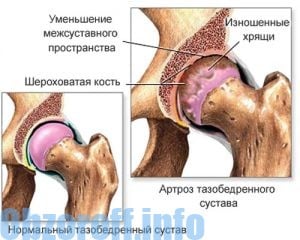Since arthrosis of the hip joint, like other diseases of cartilage and bone tissue, is, in principle, incurable, all actions are aimed at slowing down the process of cartilage degradation and, if possible, stop it. Especially in the initial stages, the patient himself can do a lot so that the disease does not progress. In addition to drug treatment, there are also various non-drug therapies. In severe cases, joint replacement is inevitable. If the issue of replacement is on the agenda, you should not delay the operation for too long, since it is difficult for a joint that has already lost mobility to recover from the operation.

Recommended Arthrosis Treatments
Light exercise is recommended, because sport promotes blood circulation, increase mobility. However, make sure you are not overloaded. Swimming and water aerobics are especially suitable in this case, because the water of the human body "loses weight", which significantly reduces the load on the joints. Warning: for beginners and people who have not been involved in sports for a long time, an additional consultation with a doctor is necessary before starting training! So, to start treatment for arthrosis, you must follow these recommendations:
- Lose extra pounds, which will significantly reduce the load on the pelvis.
- Thermal procedures, massage, physiotherapeutic procedures will eliminate muscle tension, relieve pain. But, if inflammation is added to arthrosis, the cold gives relief much faster than heat. Talk with your doctor about treatment options.
- When displacing joints, it is useful to take measures to restore their correct position. Here, orthopedic shoes, tabs, or, in advanced cases, appropriate operational measures will come to the rescue.
- Physiotherapy: Low-frequency electric current is used by electrotherapy to relieve pain. One of the most famous methods is percutaneous electrical nerve stimulation.
- Therapeutic gymnastics - improves mobility, strengthens the muscles, which may be sufficient in the initial stages of arthrosis to alleviate and reduce pain.
Medication for arthrosis
NSAIDs - the so-called non-steroidal anti-inflammatory drugs, can relieve pain. Typical NSAIDs are aspirin, ibuprofen, diclofenacketoprofen. They do not contain cortisone, hence their name. These drugs not only reduce pain, but also suppress inflammation, by reducing the body's production of substances (the cyclooxygenase enzyme) that cause pain, inflammation of damaged tissue. NSAIDs should be used only for a short time, at the lowest possible dosage, since the range of side effects of NSAIDs is wide - indigestion is especially common.
- Painkillers - do not have anti-inflammatory effects, but only relieve pain. These are, for example, opioids used for severe pain in the form of tablets, drops, or patches.
- Corticosteroids - have the properties of hormones in the body, relieve inflammatory processes in the body. They are usually injected directly into a diseased hip joint, sometimes with anesthetics. This has the undeniable advantage that the necessary substances are delivered directly to where it is needed. Such injections should not be used for a long time.
Often used to treat arthritis, bursitis and arthrosis. cream Artrovex, which has proven effective in many European countries and has many positive reviews from patients.
Surgical Therapies for Arthrosis
Two methods are used. The first method is to “fit” the damaged swivel and femoral heads to each other. The second method replaces a diseased hip joint with a fully or partially artificial joint called an endoprosthesis.
The application of the first method is advisable for low and moderate forms of arthrosis, when deformations of the femoral head or bone outgrowths of the edges of the acetabulum can be seen. Without treatment, these deformations lead to a gradual wear of the entire joint. If the cartilage is still in good condition, the femoral head can be mechanically formed so that bone spikes no longer form.

Joint prosthetics
Endoprosthetics (implantation of an artificial hip joint) is one of the most frequently performed surgical operations. The methods of the operation, as well as implants, have improved significantly in recent years, so the chances of success are very high. As before, however, so far have not invented materials that in their capabilities can be comparable to those of a natural joint. Endoprosthesis life is about 15 years. The choice of endoprosthesis material is diverse today - ceramics, metal, or plastic
The choice of the method of operation, the material of the prosthesis depends on the condition of the bone around the joint, which must be replaced, body weight and other individual factors of the patient. The first time after surgery, the functions of the weakened, spasmodic muscles of the joint should be restored with the help of therapeutic exercises, including coordination, endurance exercises. Recommended sports after the endoprosthetics operation are swimming, walking on flat terrain, golf, cycling. Sports with frequent changes in pace and loads, such as football, handball, tennis, and skiing, are not recommended.
And do not forget - active movement is the key to the good condition of your joints.
Our team once became interested in a fashion trend: cryptocurrency trading. Now we manage to do it very easily, so we always get passive profit thanks to insider information about upcoming "cryptocurrency pumps" published in the Telegram channel. Therefore, we invite everyone to read the review of this crypto-currency community "Crypto pump signals for Binance".